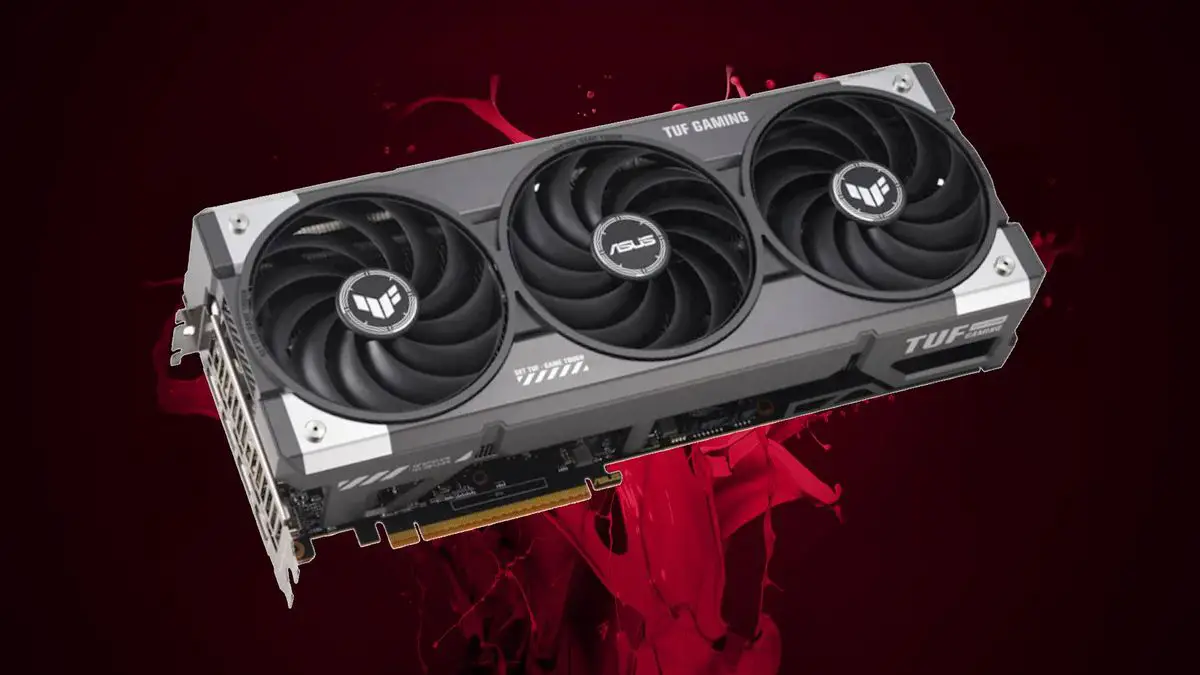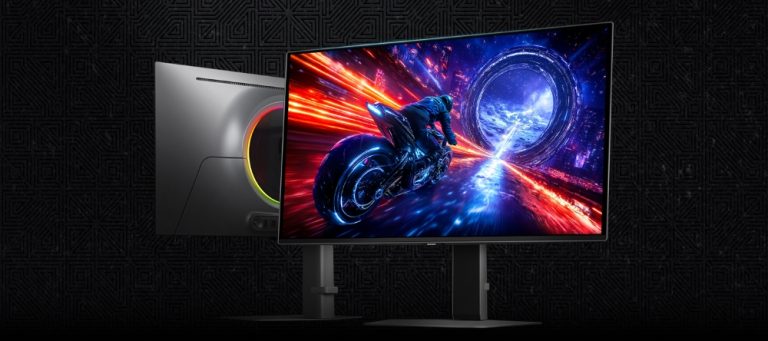
The AMD Radeon RX 9070 XT is powered by advanced RDNA 4 Architecture. This points out the big step forward in the mid-range GPU Market. This GPU was launched on 6 March 2025 and it provides amazing 4K gaming performance. In this blog we will review the power and performance of Radeon RX 9070 XT.
Exploring RDNA 4 Architecture in AMD Radeon RX 9070 XT
AMD’s RDNA 4 architecture represents a big evolution in the GPUs design. This targets the tech professionals who seek advanced GPU technology. Below we will discuss the architecture, memory and cache and performance improvement of RDNA 4 architecture.
Monolithic Design and Transistor Density
RDNA 3 adopted chiplet design that separates memory cache from graphic compute. RDNA 4 returns a monolithic GPU design. This change finishes the need for inter chiplet design. This enables memory and compute units to interface directly through infinity cache. This improves the latency and bandwidth efficiency.
Memory Subsystem and Infinity Cache
RDNA 3 provides 96MB Infinity cache. On the other hand, RDNA 4 has a smaller 64MB third generation Infinity Cache. But despite being smaller, this cache is more advanced because it provides double bandwidth and capacity efficiency. This helps in reducing the lower memory bandwidth of 640GB/s from its 16GB GDDR6 memory. Also it runs at 20GB/s over a 256-bit bus. The L2 cache also saw an upgrade from 6MB to 8MB. This improves data locality and decreases latency.
Performance and Efficiency
The RX 9070 XT gains a maximum clock speed of 2.97GHz and keeps a total board power (TBP) of 304W. It provides a balance between the GPU performance and efficiency. AMD believes that the GPU provides 30% improvement in performance-per-watt as compared to RDNA 3. This is because of its architectural improvement and the 4nm process node.
Benchmark of AMD Radeon RX 9070 XT: Real World 4K Gaming Performance
The GPU has risen as a competitor in the mid range GPU market. This provides a mixture of strong rasterization performance and notable ray tracing improvements. With its 16GB GDDR6 memory, the GPU targets the gamers and performance testers who are looking for high quality 4K experiences.
4K Gaming Performance in Latest Titles
In real world 4K benchmarks in several games, the GPU has provided amazing frame rates that make it viable choice for native 4K gaming:
- Resident Evil 4:- The GPU has gained an amazing average of 103FPS. It almost matches the performance of RTX 4080 Super. This FPS shows its amazing rasterization strength.
- Cyberpunk 2077:- The GPU has attained 53FPS on average. It is notable that the 9070 XT is technically ahead of the 4080. The 7900 XTX remains about 9% higher framerate than the 9070 XT.
- Dragon’s Dogma 2:- The average FPS GPU provides for this title is 61FPS. This outclasses the RTX 5070 by 26% through performance changes depending on the game’s ray tracing implementation.
- FFXIV:- At 4K resolution, the GPU attained 68FPS on average. This means that the GPU is worse than RTX 5070 in this case. The GPU RTX 5070 outclasses RX 9070 by 13.6% with its 78FPS average.
Ray Tracing Capabilities
AMD has made a real advancement in ray tracing with the RX 9070 XT. Although NVIDIA is still better in several titles. Notable Ray tracing capabilities are:
- Black Myth:- The GPU runs at 29FPS average. This is playable but behind the RTX 5070’s 40FPS. This represents a 45% improvement over the previous generation 7900XTX. This points out AMD’s progress in ray tracing.
- Cyberpunk 2077:- The GPU has shown a 66% performance improvement as compared to old models. This is because of its ray tracing frame rates that keep it competitive.
- Resident Evil 4:- The GPU achieves 104FPS averagely. This performance has outclassed the RTX 4070 Ti Super and RTX 5070. This makes it a strong choice for ray traced 4K gaming at a mid range price point.
AMD Radeon RX 9070 XT vs NVIDIA RTX 5070 Ti
Below is the detailed comparison of RX 9070 XT with RTX 5070 Ti.
General & Market Information
| Features | Radeon RX 9070 XT | RTX 5070 Ti |
| Architecture | RDNA 4 | Blackwell 2 |
| Lithography | 4nm TSMC | 4nm 4NP TSMC |
| PCIe Interface | PCIe 4.0×16 | PCIe 5.0×16 |
| Suggested PSU | 650W | 650W |
| Number of Display Outputs | 1x HDMI, 3x DisplayPort | 1x HDMI, 3x DisplayPort |
| MSRP | $948 | $1174 |
GPU Specifications
| Features | Radeon RX 9070 XT | RTX 5070 Ti |
| Base Clock Speed | 2400MHz | 2300MHz |
| Boost Clock Speed | 2970MHz | 2450MHz |
| L1 Cache | 128KB | 128KB |
| L2 Cache | 4MB | 64MB |
| Memory Size | 16GB | 16GB |
| Memory Type | GDDR6 | GDDR7 |
| Memory Bus Width | 256-bit | 256-bit |
| Memory Bandwidth | 624GB/s | 896GB/s |
| TDP | 260W | 300W |
Performance Metrics
| Metric | Radeon RX 9070 XT | RTX 5070 Ti |
| Gaming Performance Score | ~5% slower on average | ~5% faster |
| Workstation Performance | 62 | 72 |
| AI/ML Performance | 67 | 66 |
| Energy Efficiency | 50 | 50 |
| FP32 Compute Power | 24.3 TFLOPS | 43.9 TFLOPS |
| Ray Tracing Performance | Lower | Higher (133 TFLOPS) |
| Texture Fill Rate | 760.3 GT/s | 686.0 GT/s |
| Pixel Fill Rate | 285.1 GP/s | 313.6 GP/s |
Features & Software
| Features | Radeon RX 9070 XT | RTX 5070 Ti |
| Ai Upscaling | AMD FSR 4 | DLSS 4 |
| Ray Tracing Support | Yes (64 RT Cores) | Yes (70 RT Cores) |
| Video Decoding | H.265, HEVC, H.264 4K | NVDEC Gen 6, AV1, VP9 |
| Video Encoding | H.265, HEVC, H.264 4K | NVENC Gen 9, AV1 Support |
Physical & Connectivity
| Features | Radeon RX 9070 XT | RTX 5070 Ti |
| Power Connectors | 2x 8-Pin | 2x PCIe 8-pin + PCIe Gen 5 cable |
| Max Display Resolution | 7680×4320 @ 60Hz | 7680×4320 @ 60Hz |
| Display Outputs | 1x HDMI 2.1a, 3x DP 2.1 | 1x HDMI 2.1b, 3x DP 2.1b |
Other articles you may find interesting
Understanding AMD HYPR-RX Technology in the RX 9070 XT: Software Features
AMD HYPR-RX is a feature that is designed to enable the users to improve their Radeon Graphics to achieve improved performance and also minimizes the delay in games. It has been designed for increasing the performance and visuals in gaming.
HYPR-RX is the abbreviation of “High Performance Radeon RX”. This technology has been designed for supercharging the ray tracing cores on AMD’s RX 7900 XTX and XT GPUs. In previous GPUs, this technology allowed special cores to operate at faster clock speeds. This results in a huge increase in processing throughput for ray traced workloads.
Key Features and Advantages
- One-Click Optimization:- AMD HYPR-RX is a one-click performance improvement tool that is found in the Radeon Software which improves the performance of Radeon GPUs.
- FidelityFX Super Resolution (FSR):- This uses angular upscaling to improve the performance and visual quality in games effectively. This provides higher frame rates without major quality compromises.
- Smart Access Memory (SAM):- SAM enables the CPU to fully access the GPU’s graphical memory. This minimizes the latency and improves data transfer speed. This improvement results in increasing performance in several games.
- Radeon Anti-Lag:- It decreases input lag by controlling the pace of the CPU work to make sure it doesn’t get too far ahead of the GPU. This minimizes the amount of CPU work queued up.
- Radeon Boost:- It merges smoothly to improve the ray tracing fidelity, frame rates and overall throughput. Games and apps that use the ray tracing will see a noticeable performance improvement. This makes AMD a strong competitor against NVIDIA RTX ray tracing.
HOW HYPR-RX Improves Gaming Experience?
This feature makes sure an improved gaming experience through several titles. This technology is improved for several games such as Fortnite, Immortals of Avenum and Resident Evil 4.
AMD’s Adrenaline Software
AMD’s Adrenaline Software plays an important role in managing the HYPR-RX settings. This provides features from frame interpolation to dynamic resolution scaling that complement the HYPR-RX technology.
Memory and Cooling Innovations in AMD Radeon RX 9070 XT
The GPU has emerged as the strong competitor in the gaming GPU market. This is not only because of its strong 16GB GDDR6 memory but also for its modern cooling innovations.
16GB GDDR6 Memory: Next Level Performance
The GPU has strong 16B GDDR6 memory for operating at an effective speed of 20GB/s on a 256-bit memory interface. This change has provided a memory bandwidth of up to 64GB/s. This is important for handling high resolution textures and complex gaming habitats.
Advance Cooling Solutions
In this GPU cooling is managed so efficiently with a 304W total board power envelope, with AMD recommending a 750W PSU for stable processing. The card gives an improved media engine that has capability 8K/60 fps AV1 encoding and decoding. It supports advanced streaming and content creation requirements.
Conclusion
The AMD Radeon RX 9070 XT with RDNA 4 architecture provides an amazing mixture of performance, efficiency and value in the mid range GPU market. With various and big improvements it provides excellent 4K gaming experiences that gives tough competition to its rival NVIDIA. The GPU is looking to become a strong candidate for gamers and creators who are looking for excellent performance without any type of lag or bottleneck.





